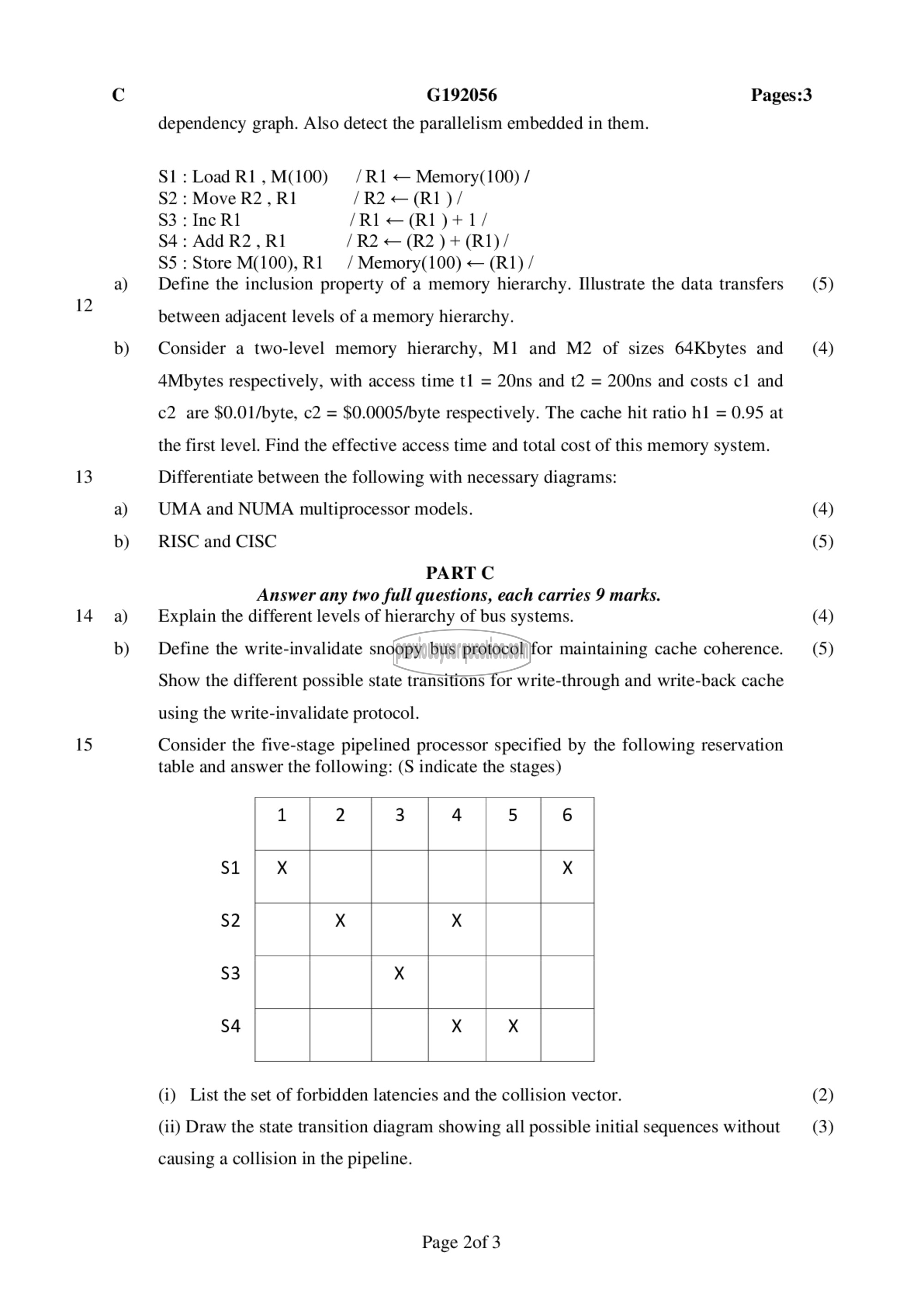APJ ABDUL KALAM TECHNOLOGICAL UNIVERSITY Previous Years Question Paper & Answer
Semester : SEMESTER 7
Subject : Computer System Architecture
Year : 2019
Term : DECEMBER
Branch : COMPUTER SCIENCE AND ENGINEERING
Scheme : 2015 Full Time
Course Code : CS 405
Page:2
12
13
14
15
a)
b)
a)
b)
a)
b)
G192056 Pages:3
dependency graph. Also detect the parallelism embedded in them.
51 : Load 1൪ ,M(100) 7/11 < Memory(100) /
52 : Move 1२2 , 1२1 /1२2 «- (२1 )/
93 : 10௦1 181 <~ (२1 )+ 1/
54: Add 1२2 , 1२1 / २2 <~ (२2 ) + (1१1) /
95 : Store M(100),R1 7 Memory(100) ൦ (२1) /
Define the inclusion property of a memory hierarchy. Illustrate the data transfers
between adjacent levels of a memory hierarchy.
Consider a two-level memory hierarchy, M1 and M2 of sizes 64Kbytes and
4Mbyftes respectively, with access time [1 = 20ns and (2 = 200ns and costs cl and
௦2 are $0.01/byte, ௦2 = $0.0005/byte respectively. The cache hit ratio hl = 0.95 at
the first level. Find the effective access time and total cost of this memory system.
Differentiate between the following with necessary diagrams:
UMA and NUMA multiprocessor models.
RISC and CISC
PART C
Answer any two full questions, each carries 9 marks.
Explain the different levels of hierarchy of bus systems.
Define the write-invalidate snoopy bus protocol for maintaining cache coherence.
Show the different possible state transitions for write-through and write-back cache
using the write-invalidate protocol.
Consider the five-stage pipelined processor specified by the following reservation
table and answer the following: (S indicate the stages)
1 2 3 ந்தி 5 ந்த
51 × ×
52 × ×
53 X
54 X X
(i) List the set of forbidden latencies and the collision vector.
(ii) Draw the state transition diagram showing all possible initial sequences without
causing a collision in the pipeline.
Page 2of 3
(5)
(4)
(4)
(5)
(4)
(5)
(2)
(3)
